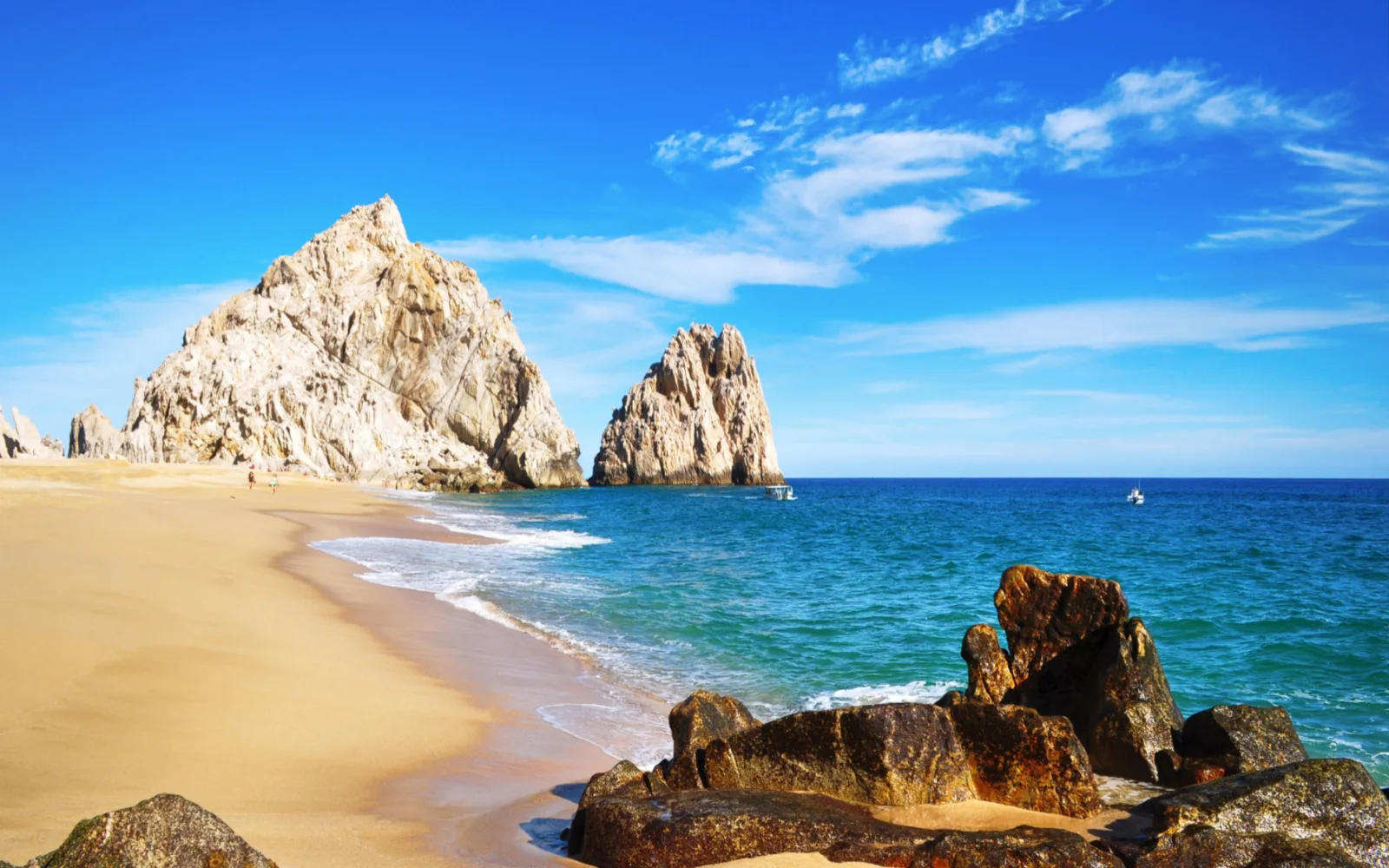Is Baja California safe to visit in 2025?
Baja California can be a safe destination to visit, but it’s important to exercise caution. The northern part of the region, including cities like Tijuana and Tecate, has higher crime rates, so we recommend staying alert.
On the other hand, the southern part, Baja California Sur, is generally considered safer. While petty crimes are a concern, travelers should also be mindful of the hurricane season, which occurs from mid-May to November.
The spectacular northern Mexican region of Baja California is a very popular destination for lovers of the ocean and spectacular landscapes.
Every year, over three million people come to the region to vacation and explore the amazing views. Baja California is home to famous cities and tourist destinations such as Tijuana and Cabo San Lucas.
The peninsula has thousands of miles of coastline, including relaxing beaches such as Bahia Concepcion or Playa del Amor, and dramatic landscapes such as Land’s End.
When you can tear yourself away from the beach, check out the lively underground scene of Tijuana or get into nature at the San Pedro Martir national park.
Baja California is a popular tourist destination, but more people would probably visit if they knew for sure that they would be safe. Mexico has a reputation for danger, especially in its northern regions closer to the US border.
You might be wondering if Baja California is safe, or is it a place that you should avoid? This detailed travel guide can help you figure out if this Mexican region is safe to visit.
Is Baja California Safe to Visit in 2025?
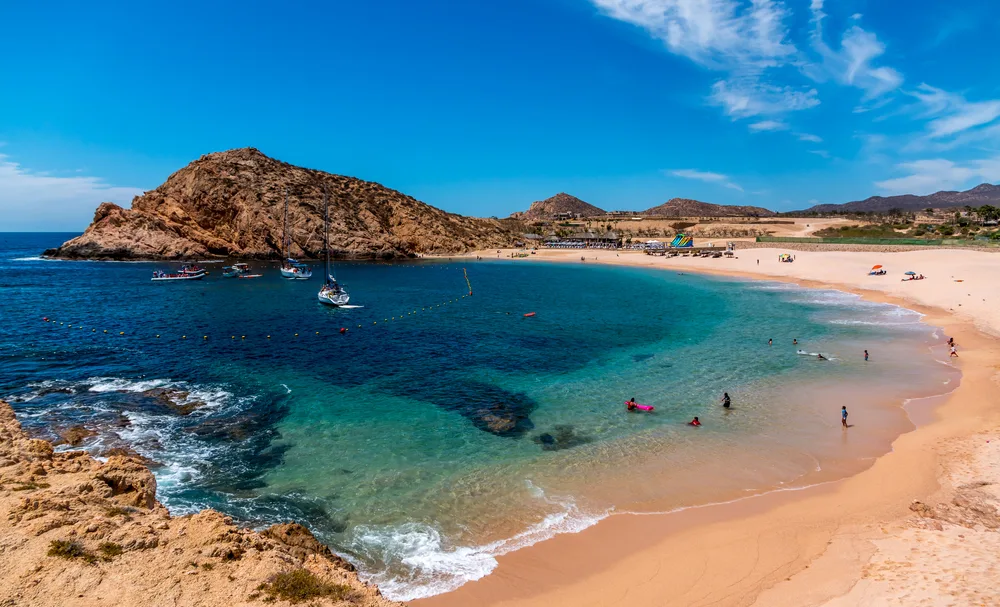
rhfletcher/Shutterstock
As in many places in Mexico, you have to exercise caution as you travel around Baja California due to the risk of crime.
However, despite a few rare violent incidents, most crimes that tourists might encounter in Baja California are petty in nature. Plus, the southern part of the peninsula, where the best beaches are, is far safer than the north.
The peninsula of Baja California is divided into two states: Baja California in the north, which contains Tijuana, and Baja California Sur in the south, containing Cabo San Lucas, which is very safe to visit.
The two states have vastly different crime profiles. The northern state of Baja California is more dangerous than the south.
Ready to Book?
Unlock Exclusive Discounts on Expedia.com!
Got Travel Insurance?
Protect yourself for unexpected interruptions.
Compare Plans We may be compensated when you book after clicking on one of our links.The United States government advises against non-essential travel to the state of Baja California due to extremely high crime rates. This is in large part due to the cities of Tijuana and Tecate, which drive up the crime rate for the state.
The UK government in its travel advisory specifies that citizens can travel to the rest of Baja California but avoid non-essential travel to those cities.
Crimes that occur in Baja California include:
- Theft
- Robbery
- Drug abuse
- Drug trafficking
- Kidnapping
- Assault
- Murder
The state is on the U.S. border, which means that it sees high levels of cartel activity. In August 2022, the Jalisco cartel went on a rampage in the streets of Tijuana, causing civilians to flee indoors. Incidents such as these unfortunately happen.
In the state of Baja California Sur, the situation is completely different. The United States government just tells its citizens to exercise increased caution in this state, while other governments don’t even bother issuing a specific travel advisory for Baja California Sur.
Crime occurs in Baja California Sur, and the crime rate here is elevated as well.
Common crimes include:
- Petty theft
- Bag snatching
- Scams
- Robbery
- Assault
While violent crime does occur in Baja California Sur, petty property crimes are far more likely to affect you on your travels. However, violent crime is unfortunately increasing in this region as well.
There have been a string of troubling incidents, such as the murder of U.S. attorney Elliot Blair while on vacation in the normally quiet beach town of Rosarito Beach.
The incident revealed that the Mexican police don’t always investigate crimes properly as they initially ruled his death an accidental fall.
As with most tropical coastal destinations, Baja California experiences hurricanes and tropical storms. Usually, they are not as severe as on the Caribbean Coast, but several days of driving rain, strong winds, and flooding are not exactly a pleasant vacation.
Hurricane and cyclone season in Baja California runs from mid-May to November, so you shouldn’t travel during that time if you want to avoid hurricanes.
Crime in Baja California
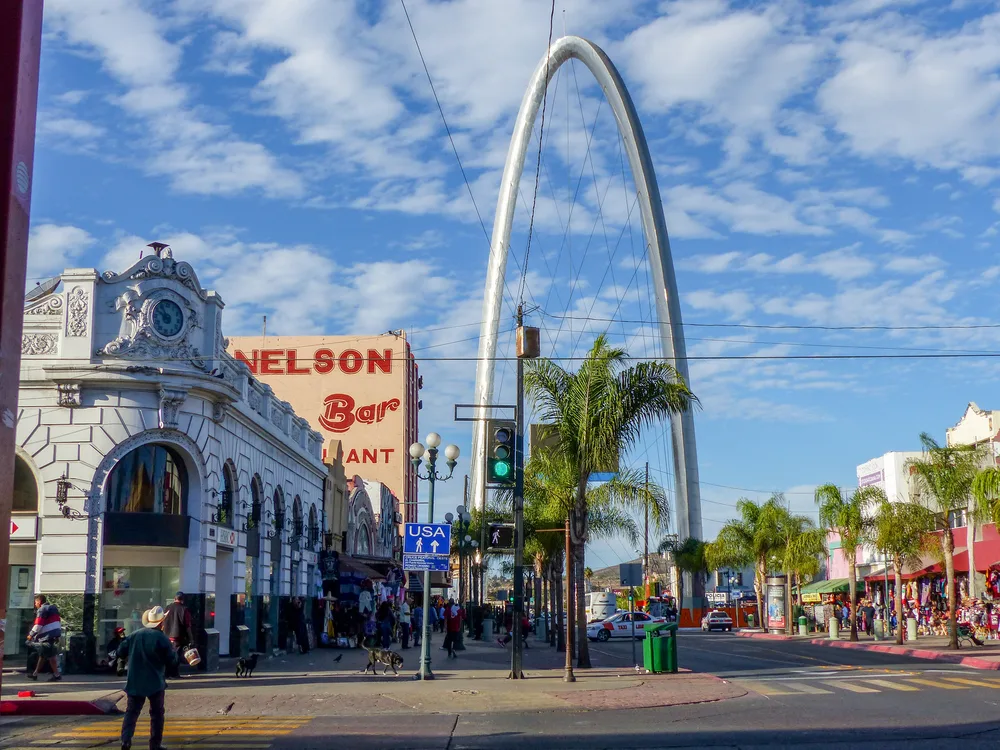
Tijuana, Mexico – November 5, 2017: Avenida Revolucion street scene and Arch/Cmsphoto/Shutterstock
Crime in Baja California is definitely your primary concern as you go on vacation. It is more of a problem in the northern region than in the south.
The northern part of the peninsula, the state of Baja California, is one of Mexico’s most dangerous states. It has the third highest crime rate and third highest homicide rate in Mexico, at 70.4 incidents per 100,000 people.
Between June 2022 and May 2023, the state experienced a whopping 2,650 murders. High homicide rates are indicative of high rates of other violent crimes, such as assault, armed robbery, and kidnapping.
The sad fact is that the situation shows no sign of improving. The homicide rate was moderate for the late 1990s to the early 2000s, before increasing drastically in 2008. Homicide numbers broke 1,000 figures in 2016 then nearly doubled in 2017.
Most of Mexico’s border states with the United States have extremely high crime rates, and unfortunately Baja California did not manage to escape this fate.
For drug cartels, trafficking drugs into the United States from Mexico is a lucrative business, which is why so many are concentrated near the border. As the cartels fractured in 2016, rival factions fought for control over the market and over territory.
States such as Baja California pay the price. Baja California is also home to Tijuana, the state’s largest city. Tijuana is unfortunately the world’s second most dangerous city, with an extraordinarily high homicide rate.
This city, along with Tecate and a few others, drives up the crime rate for the state overall. Most of the violent crimes in the state are driven by cartels, who rarely target tourists, but it is very easy to get caught in the crossfire.
The crime picture for Baja California Sur is very different. Baja California Sur has one of the lowest crime rates in Mexico. In particular, it has the third lowest homicide rate at 5.2 incidents per 100,000 people.
Between June 2022 and May 2023, the state had only 44 homicides, a rate that is lower than many U.S. states. The crime picture in Baja California Sur is not all ideal either.
There is plenty of petty crime against tourists, a common thing wherever in the world you find lots of tourist resorts. Plus, violent crime has increased since 2015 in the state as well due to cartel fracturing, a problem that affected all of Mexico.
Baja California Sur is definitely one of the safest places in Mexico where you can go on vacation, although you shouldn’t forget all of your safety precautions here either.
Petty Theft
Petty theft is the most common crime that you should be aware of when you visit Baja California. Around the world, thieves tend to operate in popular tourist destinations, and the beaches of Baja California and resort towns such as Cabo San Lucas are no different.
Beach towns, such as Cabo San Lucas in Baja California Sur, have moderate rates of petty theft. There is also a risk of pickpocketing and bag snatching in bigger cities on the peninsula such as Tijuana.
Common forms of petty theft include pickpocketing, bag snatching, theft of unattended items, and scams. Pickpockets often target tourists because they know that they are wealthier and more likely to be carrying lots of cash, valuable IDs, and expensive electronics compared to locals.
Try to blend in by not flashing expensive items. You don’t want to make yourself a target through carelessness. Make sure that you take reasonable care of your valuables when you are in Baja California.
That means never leaving your valuables unattended, for example when you are swimming on the beach (thieves like to pick through bags left on the shore). Opt for a secure bag, such as a zipped cross-body bag, that is harder to snatch or steal from.
Cartel Violence
Most people worry about cartel violence when they plan a trip to Mexico. After all, this is the type of crime that grabs the headlines and makes all the news stories about Mexico.
Cartels are sometimes behind crimes that affect tourists, such as express kidnappings (robbers will force a victim to drain their ATM at gunpoint, effectively paying their own ransom on the spot).
However, most cartel activities involve crimes such as drug trafficking, extortion, and racketeering that primarily affect locals, not tourists.
There is a real risk of being caught in the crossfire during a cartel fight, especially as fracturing of the main cartels has caused more fights for territory over the past few years. You can avoid this risk by avoiding areas that are known to be cartel zones.
In recent years, there has been an expansion of cartel-related violence into parts of Baja California that used to be safe. According to the Australian government travel advisory for Mexico, Baja California Sur has experienced a significant rise in drug-related homicides and other violent crimes.
This is a shocking reality for a state that used to be one of the safest in Mexico (and unfortunately still is one of the safest in Mexico due to this rise in crime affecting the whole country).
The good news is despite what pop culture might tell you, it is highly unlikely that cartel violence will affect you as a person on vacation in Mexico. As long as you mind your own business and do your research on what places are safe to visit, you should have a safe time.
Avoiding Bad Areas
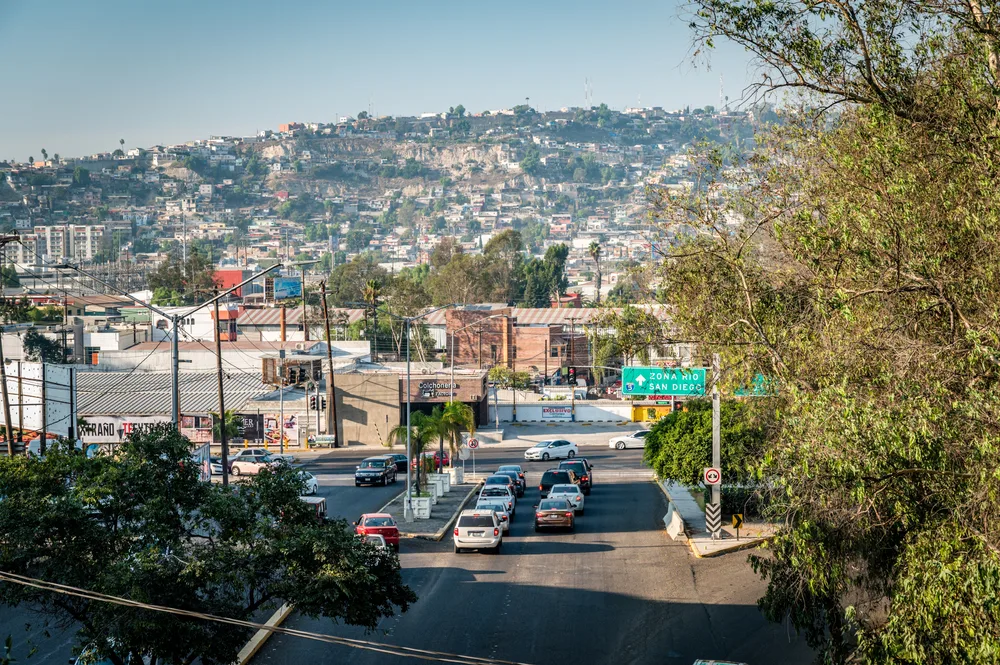
October 6, 2020: View of poor area of Tijuana Mexico with buildings on hill and traffic in foreground/Manuela Durson/Shutterstock
Avoiding dangerous parts of Baja California is absolutely key to staying safe. The city of Tijuana has some of the highest crime rates in the world.
Many tourists still visit for the delightful city center, which is relatively safe during the day but should be avoided at night. Avoid Tijuana’s Zona Norte at all times due to cartel activity.
Avoid the city of Tecate in Baja California state due to high crime rates, as well as the roads between Tijuana and Tecate. Avoid areas near the border except for official border crossings as smuggling and drug trafficking are common.
Most other cities are relatively safe. You will want to trust your gut and if a place feels unsafe, get out of there immediately. Avoid impoverished slums on the city outskirts, for example in Ensenada.
Things to Consider
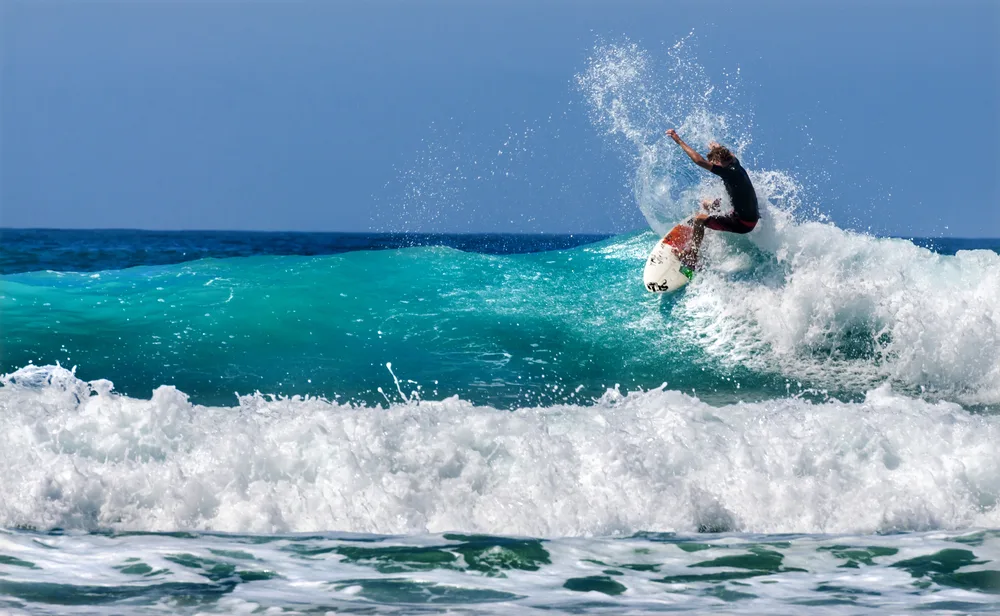
Javier Garcia/Shutterstock
Here are a few additional safety tips for Baja California:
- Ask to see a citation if a police officer stops you while driving. Police officers often extort foreigners this way, so avoid paying the fine on the spot. Remain polite so the situation doesn’t escalate.
- Don’t drive at night. Not only do crimes increase at night, but road conditions are also dangerous due to poor lighting and wandering livestock.
- Do not do drugs. Drugs are highly illegal in Mexico and the government severely punishes those who get caught. Plus, you don’t want to wind up on the radar of the cartels or give them any more money than they already have.
- Be careful during activities in nature. When booking a whale-watching or hiking tour, check the tour company’s safety rating and read previous reviews.
Frequently Asked Questions
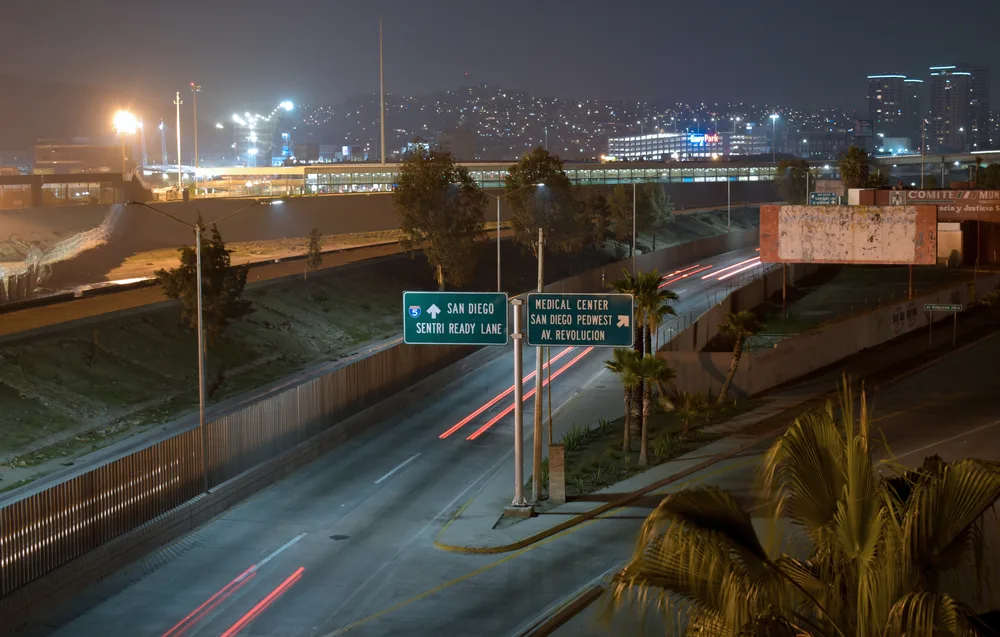
Fernando Cebreros/Shutterstock
Here are some common questions that other travelers have asked about visiting Baja California:
Is Baja Mexico safe for tourists?
Parts of Baja are safe for tourists, especially Baja California Sur. Other parts, such as Tijuana and the border region, are unsafe for tourists and locals.
Where is the safest place to go in Baja California?
Quieter, smaller towns in Baja California Sur are the safest places for your vacation. Examples include La Paz and San Jose del Cabo.
Is Baja California worth going to?
Baja California is absolutely worth the precautions you have to take to visit it safely. Few places on Earth have such spectacular, dramatic landscapes nestled along pristine swimming beaches.
Is it safe to travel to Mexico right now in 2023?
The answer depends on where you are going in Mexico. Baja California Sur is a safe destination, for example. However, most places in Mexico have been affected by a nationwide uptick in cartel activity, including places that were previously considered safe, so make sure that you exercise precautions during your visit.
Is it safe to swim in Baja?
Be very cautious when swimming in Baja. Swimming in beaches along the Sea of Cortez is far safer than in the Pacific Ocean. Ask locals which beaches are safe to visit and obey any posted warnings.
Book Your Trip to Baja California Today!
Baja California is a vast peninsula, which means that its safety depends on where on the peninsula you are visiting. The northern part of the peninsula is dangerous due to high cartel activity, while Baja California Sur is safe as long as you take a few precautions. Happy travels!



